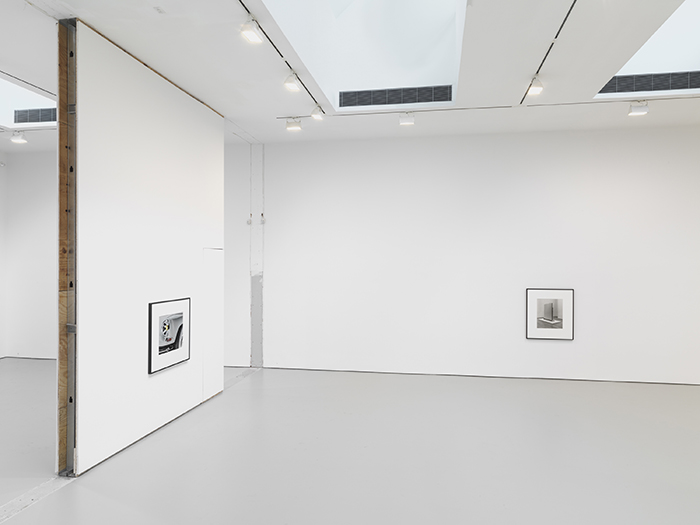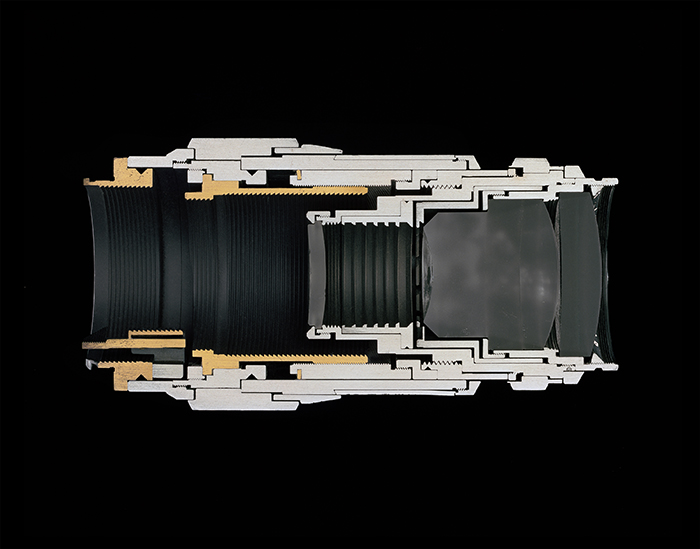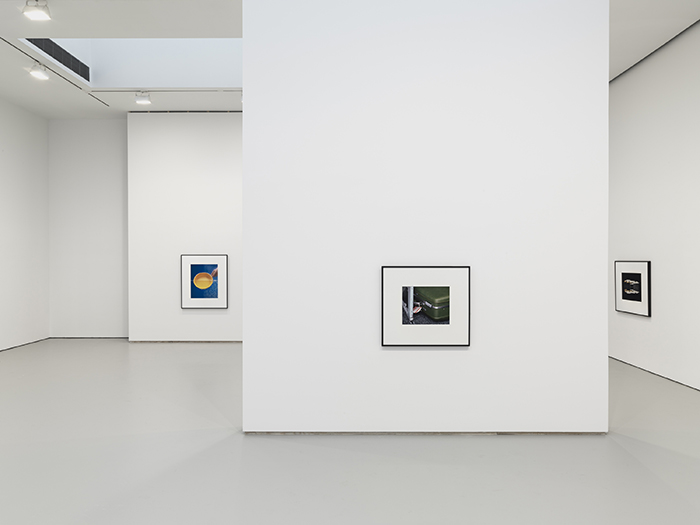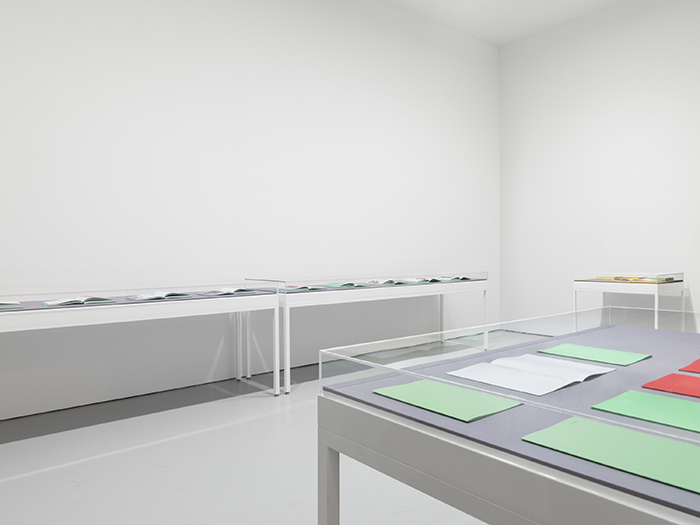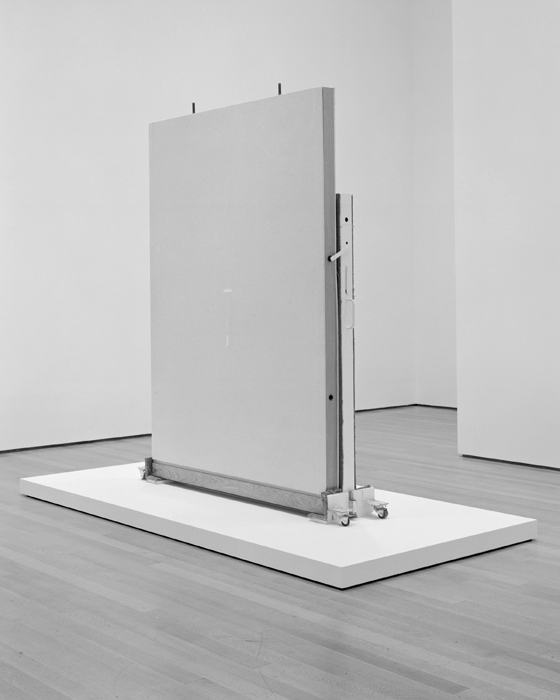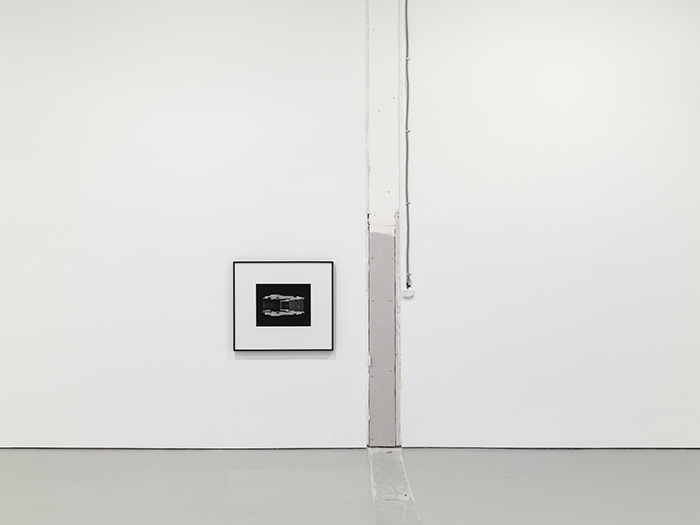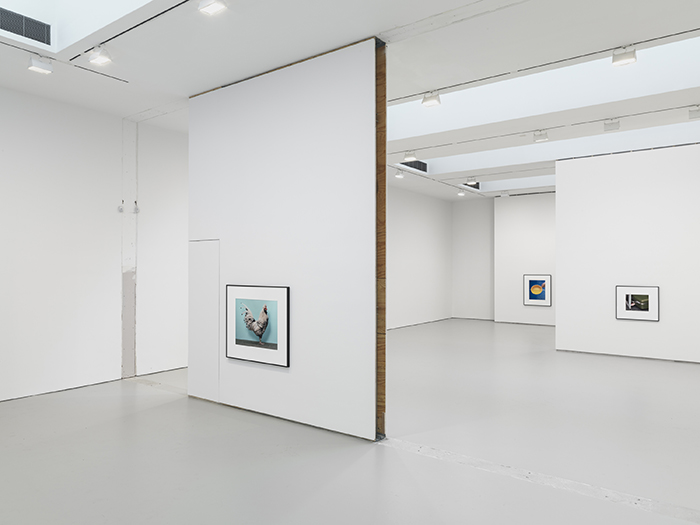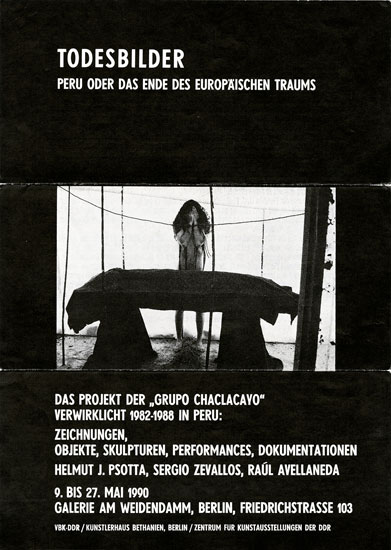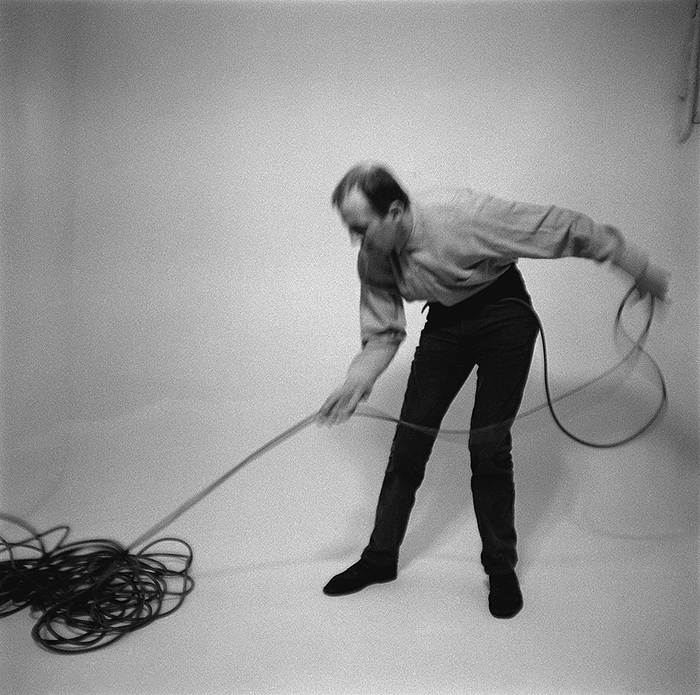November 6–December 20, 2014
Do you think any collectors were bothered by the raw, open drywall and exposed electric wiring at Christopher Williams’s newest exhibition at David Zwirner? Or did they read it as a bad-boy “fuck you” without actually feeling insulted? Did they read it as Christopher Williams probably intended, as a savant gesture referencing the institutional critique strategies of his mentor Michael Asher, who made work during a time in which manipulating a gallery’s architecture was actually a radical gesture? Do you remember the time in Sex and the City that Charlotte meets a movie star in her gallery and he confuses the fire extinguisher for contemporary art?
Wait—cringe! I forgot mass-appeal pop culture isn’t in-the-know enough to be considered a salient reference in a contemporary art criticism context, even if it’s poking fun of the art world’s need-to-knowness, and especially not if it’s a television show detailing the lives of “basic” women. Intentionally raw walls okay; Sex and the City references not okay. Got it.
You probably get what I’m going for here. There are certain radical gestures—walking around nude in full body paint at an art fair, making monochrome paintings, or performative alterations in the gallery space, for example—that through time have become so prescribed that they’re really not subversive at all, but are still created with the expectation of an earthshattering, slack-jawed reception. These practices are both narcissistic and impotent.
Although I’m poking fun at Williams’s blue-chip gallery institutional critique, his exhibition “For Example: Dix-Huit Leçons Sur La Société Industrielle (Revision 19)” doesn’t entirely fit into this category. To be fair, his recently closed exhibition at New York’s Museum of Modern Art was impeccably conceived and installed—it’s just that any brand of institutional critique only works, well, in an institution.
Williams’s inquiry into photography, as the exhibitions at both MoMA and Zwirner demonstrate, looks at the medium as a vast network of material and conceptual production and reception processes, and illustrates this, directly and metaphorically, through the medium itself. For example, his striking photograph of a cross-sectioned Leica camera lens at Zwirner (Cutaway model Leica Leitz Wetzlar Tele-Elmar 135/4.0…[the full title is not quotable here as it is many, many words long], 2014) speaks to each the materiality of the lens and photographic formalism, to photography as an array of symbiotic operations, and to the deconstructive impetus of art.[footnote The full title is Cutaway model Leica Leitz Wetzlar Tele-Elmar 135/4.0 Focal length: 135 mm Aperture range: 4 – 22 Number of elements/groups: 4/4 Focusing range: 1.5 m – infinity Angle of range: 18 degrees Filter thread: 39 mm Weight: 405 g Dimensions: 53.4 × 122.69 mm Manufacturer part number: 11850 Lens design by Dr. Walter Mandler Manufactured by Ernst Leitz GmbH, Wetzlar, Germany Studio Rhein Verlag, Düsseldorf March 14, 2013.] K-Line Matt Dulling Spray… (2014) depicts what appears to be a yellow ceramic sautée pan, apparently treated with K-Line matt dulling spray, being immersed in water by a hand wearing red nail polish. The full title goes on to include the literature on the product’s label:
CFC Free Applications - Photographic - Motion Picture - TV Studio Removes Glaring Highlights from Polished Surfaces in Camera Work. Coats evenly with a very fine spray pattern – it effectively dulls any polished object to be photographed. Directions Shake the can well, and whilst spraying, hold not more than 30 cm (12 inches) from the object. The spray sets in about 2 minutes, and further coats may be added if necessary. It wipes off easily with a soft cloth and all smears can be removed with a little spirit. K-Line spray is safe with most materials, but a test should be made on a scrap surface if in doubt, especially with some types of plastics. Caution Pressurised container. Protect from sunlight and do not expose to temperatures exceeding 50º C. Do not pierce or burn even after use. Do not spray on a naked flame or any incandescent material. Keep away from sources of ignition – No Smoking. Keep out of reach of children. Do not breath spray. Avoid contact with eyes. Use only in ventilated areas. Store at a minimum of 20º C UN 1950 Extremely Flammable 2827 S W Kenyon Cranbrook – Kent U.K. Division of K-Line Photographic Supplies Company Telephone: 01580 850770 Made in Britain Registered in the US Patent and Trademark Office Studio Rhein Verlag, Düsseldorf August 24, 2014
By titling his photograph after a component of the photographic production process, K-Line Matt Dulling Spray activates the artwork title as an often-overlooked space where information about artwork is conveyed while simultaneously pointing to photography’s commercial purpose. Williams similarly turns his gaze to book production in Printed in Germany (2014), a “wordless essay using the materials of graphic design and book production (repetition, scale, placement, pagination, binding, etc.),” as per the press release, or in other words, an elegantly empty book.
Again channeling Asher, the photograph Demountable wall panel with panel storage cart from the exhibition The Production Line of Happiness, Art Institute of Chicago… (2014) depicts a movable wall panel, prompting us to think about the architecture—again, metaphorical and literal—of the museum. Michael Asher did this perhaps more poignantly in his 2008 retrospective at Santa Monica Museum of Art, in which he reconstructed all of the institution’s temporary walls from 1998 through the exhibition’s opening. The resulting exhibition comprised aluminum studs and looked akin to a gigantic cage. While Williams’ Demountable wall panel is a beautiful photograph in its own right, it hardly adds anything new to this strategy, and only works in tandem with a constellation of other works pointing outward toward other networks of reception.
However, “For Example” completely ignores one very powerful network within which it exists—that of the collector. As Williams’s MoMA retrospective proved, the artist has undertaken an incisive body of work connecting institutional critique, conceptual art, and photography. Given his sensitivity to and success in such past endeavors, it comes as a shame that his object of inquiry, which is often site-specific, hasn’t shifted to the increasingly mutable form of the commercial gallery. While the art institution was the locus of much power in the heyday of institutional critique, that power has now arguably shifted to the gallery. Why retread old tricks today, when something new and more ugly is afoot?
